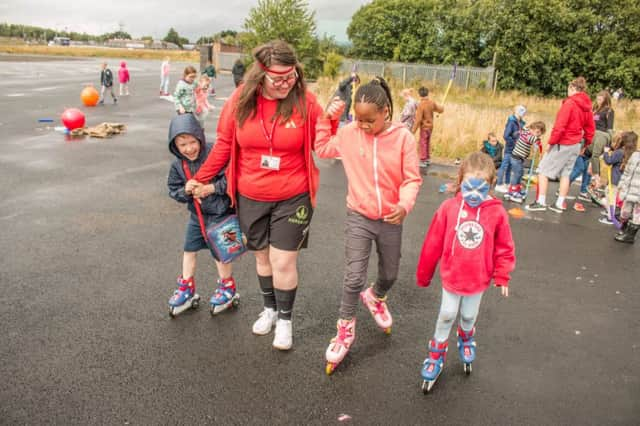Small charities can make a big difference online


The immediacy of social media allows lesser known organisations to build a public profile that would previously have been impossible.
Advertisement
Hide AdAdvertisement
Hide AdIt’s also cheap. Once a smartphone or tablet has been acquired, the only remaining overhead is the cost of a reliable internet connection. The need to print 1000 leaflets, many of which would go unread, is over.
“Social media is very practical; you can a tell a story in a moment and get it out there,” said Melodie Crumlin, chief executive of Possibilities for Every Kid (PEEK), a children’s charity based in the east end of Glasgow. “Before that, you would write something down and perhaps forget about it before anyone has a chance to hear it.”
PEEK, which was founded in 2000, employs 20 staff. Each one has a charity-branded Twitter account and is encouraged to use it; posting pictures from events, speaking with parents, generally promoting the work of the organisation.
While large, nationwide charities employ dozens of dedicated staff to oversee publicity, PEEK can spread its message on a fraction of the budget.
Visit the PEEK homepage and links to its Facebook and Twitter accounts are prominently displayed. Comments and messages are positively encouraged.
The charity is one of many north of the border who have embraced digital media successfully.
“While smaller Scottish charities may not necessarily have the budget of their larger London counterparts or the luxury of a digital team supporting their work, there’s some great examples of third sector organisations using digital to get their job done,” said Ross McCulloch, director of Third Sector Lab, which offers online training to non-profit organisations.
“In particular, groups such as PEEK and Dad’s Rock in Edinburgh have shown that if you trust staff to get on with it, digital can be used for everything from engaging local parents to connecting with politicians at ministerial level.”
Advertisement
Hide AdAdvertisement
Hide AdMcCulloch cautions charities not to dive headfirst into social media without a firm idea of what they hope to achieve and what message they plan to promote.
“Don’t set-up a Facebook page because you think it’s the right thing to do,” he said. “Take a step back, think about what your charity wants to achieve and work from there. Make sure you align goals, audiences and social media channels.”
PEEK has a clear set of guidelines for staff when using social media to encourage best practice and highlight the fact it trusts individuals to behave appropriately.
“Staff, volunteers and trustees need to feel protected if they’re going to start using social media. A robust policy needs to be in place that protect organisations and show it trusts people,” McCulloch added.
“Good content is where lots of third sector organisations fall short. The golden rule is your content should be useful or interesting. Tick one of those boxes and your audience will thank you.”
Melodie and her PEEK colleagues use differing social media platforms to interact with distinct groups.
“Parents of children are very active on Facebook,” she said. “We use twitter more to speak with our funders, potential funders and businesses as well as the general public.
“Quite often young people in the East End get a bad press, but we’re working with some youngsters who are doing some amazing things. We can have a conversation with someone and set the record straight.
“Then we have Linkedin, which is for business use.”
Advertisement
Hide AdAdvertisement
Hide AdMelodie believes a lack of resources and a reluctance to allow all staff members access to social media explains why some other small charities have not followed PEEK’s example.
“It’s about trusting your team to put out the right messages,” she said. “Everything we do at PEEK is based on trust, we do have policies and procedures in place, but a large part of it is relationships.
“It’s also about resources; you need access to a smartphone or device. Some smaller charities don’t necessarily have that. Our board have invested the money in equipment. For example, if our staff are at a street play, if they have an iPad with them, they can take a picture and upload it straight away.”
PEEK, which works with children from across the east and north of Glasgow, realises social media cannot replace word-of-mouth recommendations from parents or families who have enjoyed one of its events or training schemes.
“A large part of what we do is meeting face-to-face with young people and parents,” added Melodie. “Nothing beats that kind of interaction when you’re sitting with someone, especially if you’re working with someone who is vulnerable.
“But social media has allowed us to move away from flyers and posters. Everything now goes through our Facebook. Social media has allowed us to engage with new supporters and more regularly.”
